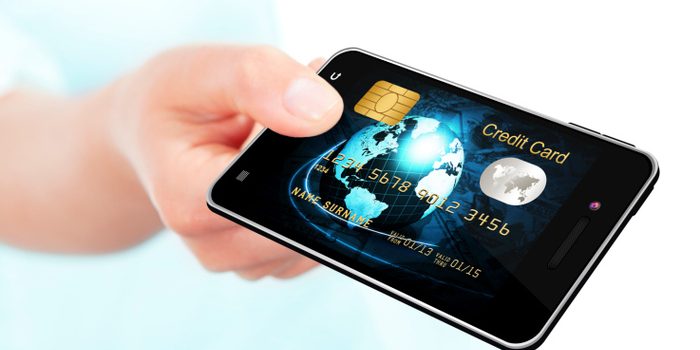A new golden age of innovation is happening right now in financial services.
When we think of digital disruption, while all industries are affected in one way or another, some of the largest disruptions ahead may well be experienced within financial services. Of course, bitcoin and blockchain come to mind right away, as well as A.I. for improved customer service and a competitive edge, but there are numerous other disruptions either already in play or poised to take effect very soon.
This is particularly so in Europe, where the Revised Directive on Payment Services (PSD2) has been designed to create a safer and more innovative European payments industry through legislation. Most importantly, it’s having a highly disruptive effect on the financial services industry because it requires banks to open access to customers’ online accounts and payment services to third-party providers, forcing banks to rethink their business models and the very ecosystems in which they operate.
Another area of ongoing innovation and disruption in financial services is clearly around mobile payments. We’ve witnessed opening salvos over the years in terms of digital wallets and digital deposits, but this is only the beginning. The banking industry as well as the high-tech industry is continuing to experiment with the art of the possible, particularly around the digital-physical blur of payments and redesigned business processes.
Here’s six examples of how payment technology and associated business processes are evolving:
Digital CVVs — French digital payment security company Oberthur Technologies has introduced a dynamic CVV (card verification value) in place of the usual static CVV. The CVV is the familiar three-digit security code on the back of the card. The dynamic CVV, which uses a random number generator to update the CVV, attempts to reduce card fraud by changing the CVV every hour or even more frequently. Since “card-not-present” transactions make up 65% of all card fraud, this can be a useful security addition since a compromised CVV now only has a limited lifespan.
Digital wallets — Apple Pay is a well-known example– among others such as Android Pay, Masterpass, Microsoft Wallet and Samsung Pay — of using a digital wallet to make mobile payments. In the Apple Pay example, credit or debit cards are stored electronically and can be retrieved rapidly to make payments via Apple’s touch ID feature. The payment process takes a matter of seconds and the biometric signature used to authenticate the user and initiate payment means no physical signature is required. In this example, the physical card has become digitized and the payment process vastly streamlined.
Wearable payment devices — A growing number of wearables including smart watches, wristbands, fitness bands and even jackets are now offering ways to pay via a simple swipe of the wrist. According to mobile and wearable payments are expected to reach $95 billion annually by 2018. As an example, bPay from Barclays offers a variety of devices, including wristbands and fobs, which can be used to pay for anything £30 and under via the bPay app, which can be linked to most major U.K. debit or credit cards.
Checkout-free shopping — Amazon Go’s checkout-free shopping experience is taking advantage of “computer vision, sensor fusion and deep learning” to enable shoppers to enter a store, select their items and walk out with no checkout required. In this example, payment devices aren’t required because the customers’ Amazon accounts are charged shortly after they leave the store. Of course, traditional credit and debit cards may be linked to an Amazon account, but the requirement for a physical, in-store payment process has been completely removed.
Contactless cash — In terms of cash withdrawals at the ATM, many banks have been rolling out cardless cash withdrawals whereby cash can be retrieved from an ATM via the Near Field Communication (NFC) technology in a smartphone. Deployed by major banks including Bank of America, Chase and Wells Fargo, contactless cash is already supported by close to 20% of the 500,000 ATMs in the U.S. In this example, we’re still dealing with physical cash, but the withdrawal process is again streamlined.
Mobile ATMs — As far back as 2015, Idea Bank of Poland has been offering a safer alternative to making nighttime deposits for business owners by equipping a BMW i3 with an ATM so the bank can literally come to them. The service is called via a user’s smartphone app and supports both cash withdrawals and deposits. According to Idea Bank, the average deposit through the mobile ATM is three times larger than at a bank branch. In this example, the traditional ATM process has been completely reversed with the ATM coming to you as opposed to vice versa.
It’s clear from these examples that we’re in a golden age of innovation in financial services. After more than 65 years of traditional credit cards (the first general-purpose charge card having been issued by Diners Club in the early 1950s), 50 years of cash machines (starting with Barclays robot cashiers in 1967) and nearly 20 years of contactless payments (starting with the ExxonMobil Speedpass in 1997), almost everything is up for reimagination.
For corporate strategists and technologists, the options are many and varied. You can reimagine business models, redesign processes and apply powerful combinations of new technologies to build entirely new value propositions for customers. Which technologies and approaches do you think will win out in the near- and longer-term? What’s your favorite fintech innovation to date? Let me know what you think.






